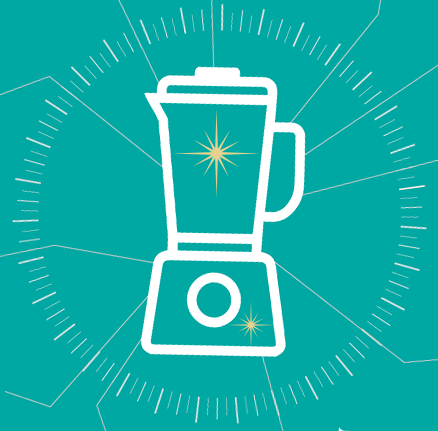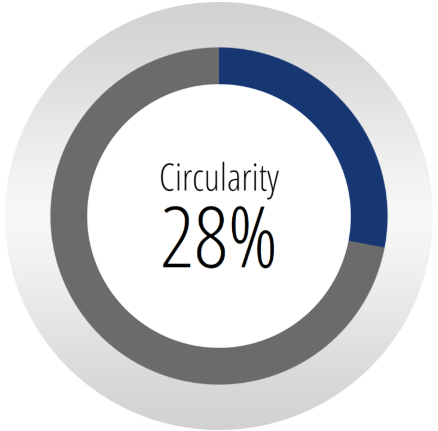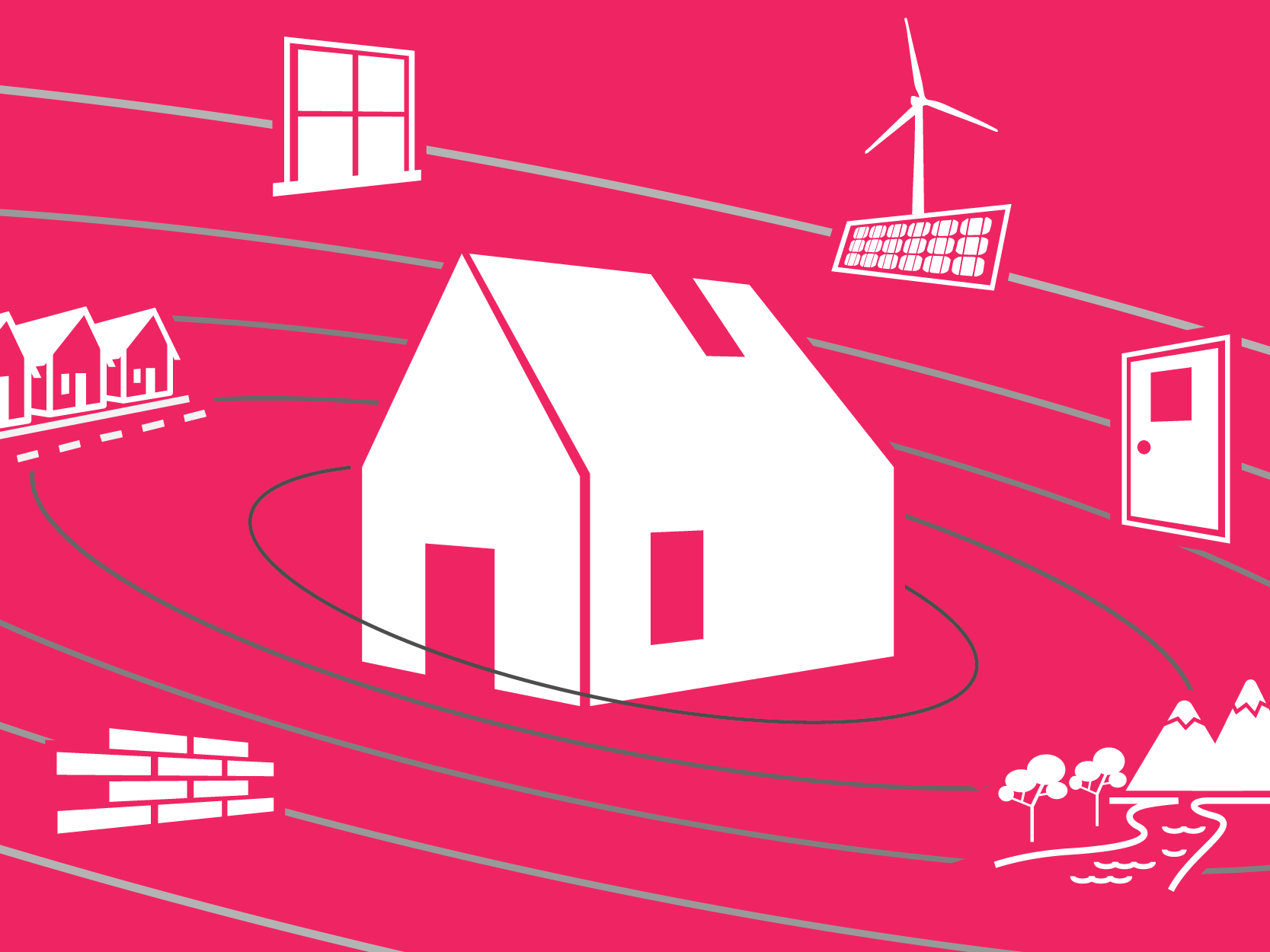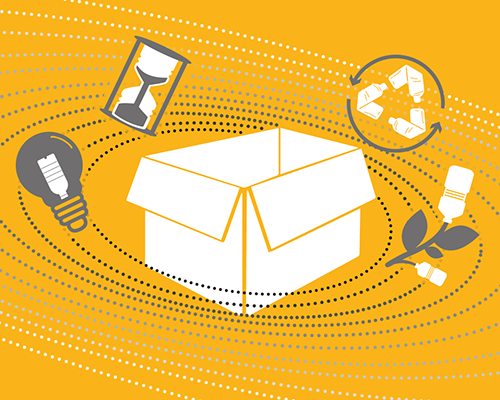Overview
This course has been discontinued, and no future sessions are scheduled. Please explore our other courses in the field of circularity for alternative options.
Circular product design helps design professionals to improve the long-term sustainability performance of their products. The key principle of the approach is 'designing out waste': fitting your product in a circular economy where the value of your product, its components and materials are maintained and not wasted.
How can you determine if your product is "circular"? And how can you assess the potential of the various circular strategies such as Reuse, Repair, Remanufacture, Recycle for your product?
Circular product design helps design professionals to improve the long-term sustainability performance of their products. The key principle of the approach is 'designing out waste': fitting your product in a circular economy where the value of your product, its components and materials are maintained and not wasted.
This course is aimed at helping design professionals such as product architects and industrial design engineers to make their products more circular. By learning how to use unique methods and tools, you will be able to assess the circularity of your product, and to make informed decisions – from minor tweaks to a complete redesign. This course addresses emerging standards for circularity (such as prEN45554) and will be of value both to those working on improving existing products and those creating new ones.
In order to effectively implement circular design strategies, you will learn to use two practical tools to assess products' circularity:
 HotSpot Mapping (HSM) – with this tool you will analyze your product architecture through the dismantling of an example product of your choice, and mapping the key properties of all components, such as material, weight, ease of disassembly, likelihood to break, and more. You will spot critical points in your product architecture related to key circularity metrics.
HotSpot Mapping (HSM) – with this tool you will analyze your product architecture through the dismantling of an example product of your choice, and mapping the key properties of all components, such as material, weight, ease of disassembly, likelihood to break, and more. You will spot critical points in your product architecture related to key circularity metrics.
 Circularity Calculator (CC) – with this tool you will quantify key circularity metrics and develop circular scenarios based on the data you have in the early stages of product development. These metrics include resource circularity and potential value capture for different circular scenarios. This tool has already been used at various companies pioneering the Circular Economy, from SMEs to international brands.
Circularity Calculator (CC) – with this tool you will quantify key circularity metrics and develop circular scenarios based on the data you have in the early stages of product development. These metrics include resource circularity and potential value capture for different circular scenarios. This tool has already been used at various companies pioneering the Circular Economy, from SMEs to international brands.
By using these two tools, you will obtain substantiated criteria and facts to decide which are the most promising circular design strategies for your particular context. The tools will also point to the most significant contributors to the effective implementation of circular strategies.
This is a highly practical course. We will work with a working example (a blender), to guide you through all the activities. You will also apply what you learn to a product of your own. You will be asked to disassemble it and evaluate its circularity using the methods learned.
What You'll Learn:
- Use HotSpot Mapping (HSM) to identify the product components that affect circularity.
- Use HSM to support improvements in product architecture appropriate for different circular strategies.
- Analyze resource flows and obtain a "circularity instinct" at component and at product level using the Circularity Calculator (CC).
- Assess and quantify the potential circularity and value capture of different strategies using CC.
- Learn how to document and discuss circular assessment results and action points to improve the circularity level of the product.
Your Learning Platform
Take a 2 minutes video tour to see how convenient and easy it is to participate in an online course of TU Delft.
Details
Course Syllabus:
Episode 1
Introduction to circular assessment: In the first week, we will cover key concepts of the circular economy, different circular strategies to capture value, and upcoming directives and legislation.
Episode 2 (spans over 2 weeks)
HotSpot Mapping: You will dismantle the product you selected and identify which of its parts need to be prioritized based on circularity metrics such as embodied value, ease of disassembly, likelihood to break and environmental impact.
Episode 3
Circularity Calculator: You will use the CC to calculate the resource and value flows of your product in a linear model. Based on the outcomes, you will develop circular scenarios that aim to capture value and improve circularity metrics.
Episode 4
Outlook, implications and reflection: Based on the assessment results, you will reflect and discuss circular assessment results and find action points to improve the circularity level of the product.
This course uses Miro to share not-graded assignments.
Bringing your own product
If you are interested in applying the assessment tools to a product of your own, please choose a product of which you can share the results, including photos or conclusions from your assessment. The course team will use these results to create feedback videos for you and your peers, providing insights into the use of the tools taught. (While you will need the bill of materials for your product, the bill of materials does not have to be shared if they are confidential and can possibly not be used in the feedback videos by the course team.) If you are unable to share the results, please select a different product for the course, such as an older product or one you have at home. Later, you can apply the tools learned to your own product. The main course objective is to teach you how to use these tools, enabling application to both your own and other products in the future. Using another product will not impede your ability to apply these tools later on.
Qualifications
Certificates
If you successfully complete this course you will earn a professional education certificate and you are eligible to receive 3.5 Continuing Education Units (CEUs).
Admission
This course is primarily geared towards working professionals.
Prerequisites
In order to follow this course, you should have a basic understanding of the circular economy, circular business models and business value in a circular economy*. You also need to bring a product for your own case study and a bill of materials that includes common data about the product such as costs per component, quantities, total costs, etc.
*If you want to expand or refresh your current understanding, we recommend you complete the (free) EdX MOOC "Circular Economy: An Introduction" prior to this course on circular assessment.
Contact
If you have any questions about this course or the TU Delft online learning environment, please visit our Help & Support page.



